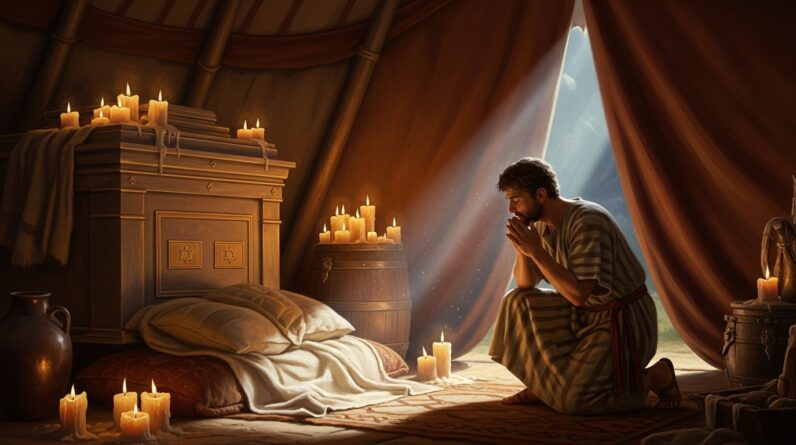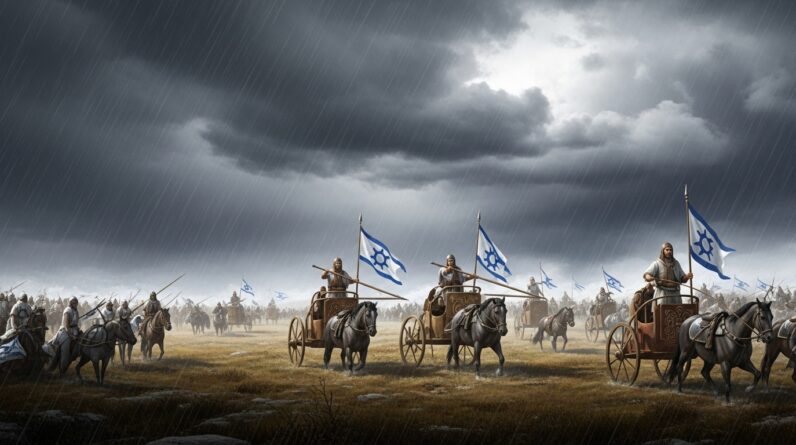Rahab’s Scarlet Cord – A Symbol Of Salvation
You’re standing at a doorway between two worlds: the ruins of Jericho and the promise of the land God had given Israel. In that doorway, a single, simple object hangs — a scarlet cord. That cord tells a story not just about a woman named Rahab but about salvation, faith, grace, and how God’s mercy reaches into the most unlikely places. As you read, you’ll see how Rahab’s life and the scarlet cord point forward to Christ, calling you to understand how God saves and how you’re invited to cling to that salvation.
Who was Rahab? A brief portrait
You should know a few things about Rahab before you dive into symbolism. She was a resident of Jericho, identified as a prostitute in the biblical account, who hid two Israelite spies sent by Joshua. Her actions saved her and her family when Jericho fell. The Bible commends her faith. This is more than an interesting anecdote; it’s a vivid demonstration that God’s grace can reach anyone, no matter their past. Read the full narrative in Joshua 2:1-21 to get the full context of her encounter with God’s people.
The scarlet cord is introduced: Joshua 2:18-21
When Rahab hid the spies, she tied a scarlet cord in her window as a sign to the Israelites so they would spare her house during the attack. This instruction is recorded clearly in Joshua 2:18-21. The cord functioned as her lifeline. You can imagine how simple and humble that act was: a rope, a color, a sign. Yet that small act carried massive, eternal significance. As you walk through this story, keep your eyes on that cord — it becomes a powerful symbol you can hold onto when you think about salvation.
The historical context: Jericho and the invasion
The story sits at the dramatic beginning of Israel’s conquest of Canaan. Jericho was the first city to fall, and its walls represented a kind of spiritual and political barrier to the people of God. Rahab’s action took place against a backdrop of divine command, military strategy, and miraculous intervention. The scarlet cord stood against the danger and destruction that swirled below Rahab’s window. When you understand the setting, you see that her cord was not an isolated talisman but a visible sign of obedience and trust in the promise given to her through the spies. For the details of the campaign against Jericho and Rahab’s role, you can review Joshua 2:1-21 again.
Rahab’s faith: more than a pragmatic choice
You must recognize Rahab’s act wasn’t just self-preservation. Scripture explicitly connects her actions with faith. Hebrews 11 mentions her as an example of faith: “By faith the prostitute Rahab… was not killed with those who were disobedient” (Hebrews 11:31). James also cites her as an example of faith demonstrated by works: “Was not even Rahab the prostitute considered righteous for what she did when she gave lodging to the spies and sent them off in a different direction?” (James 2:25). When you read these verses, you see Rahab’s life is a theological lesson: faith that saves shows itself in obedience. The scarlet cord is the physical sign that accompanied her faith.
The scarlet cord as a sign of salvation
Here’s where symbolism becomes personal. The scarlet cord hung in Rahab’s window, marking her household for protection. It marked those who would be spared from judgment. In the same way, God appointed signs of protection throughout Scripture — like the blood on the doorposts at the Passover. Exodus records God telling Israel, “The blood will be a sign for you on the houses where you are; and when I see the blood I will pass over you” (Exodus 12:13). The scarlet cord and the Passover blood both function as visual tokens by which God’s judgment is averted and deliverance is secured. When you think about the “Rahab scarlet cord,” you see a picture of God’s protective mercy that you can relate to your own need for rescue.
Scarlet as a color of sins forgiven
The Bible uses the color scarlet elsewhere to symbolize sin and forgiveness. Isaiah famously declares, “Though your sins are like scarlet, they shall be as white as snow” (Isaiah 1:18). That means the very hue Rahab chose carries theological resonance: scarlet stands both for the stain of sin and the promise of cleansing. When you think of the phrase “Rahab scarlet cord,” you’re connecting two truths — your need for forgiveness and God’s offer to remove your guilt. The cord signals that, by faith and obedience, you can be marked for salvation.
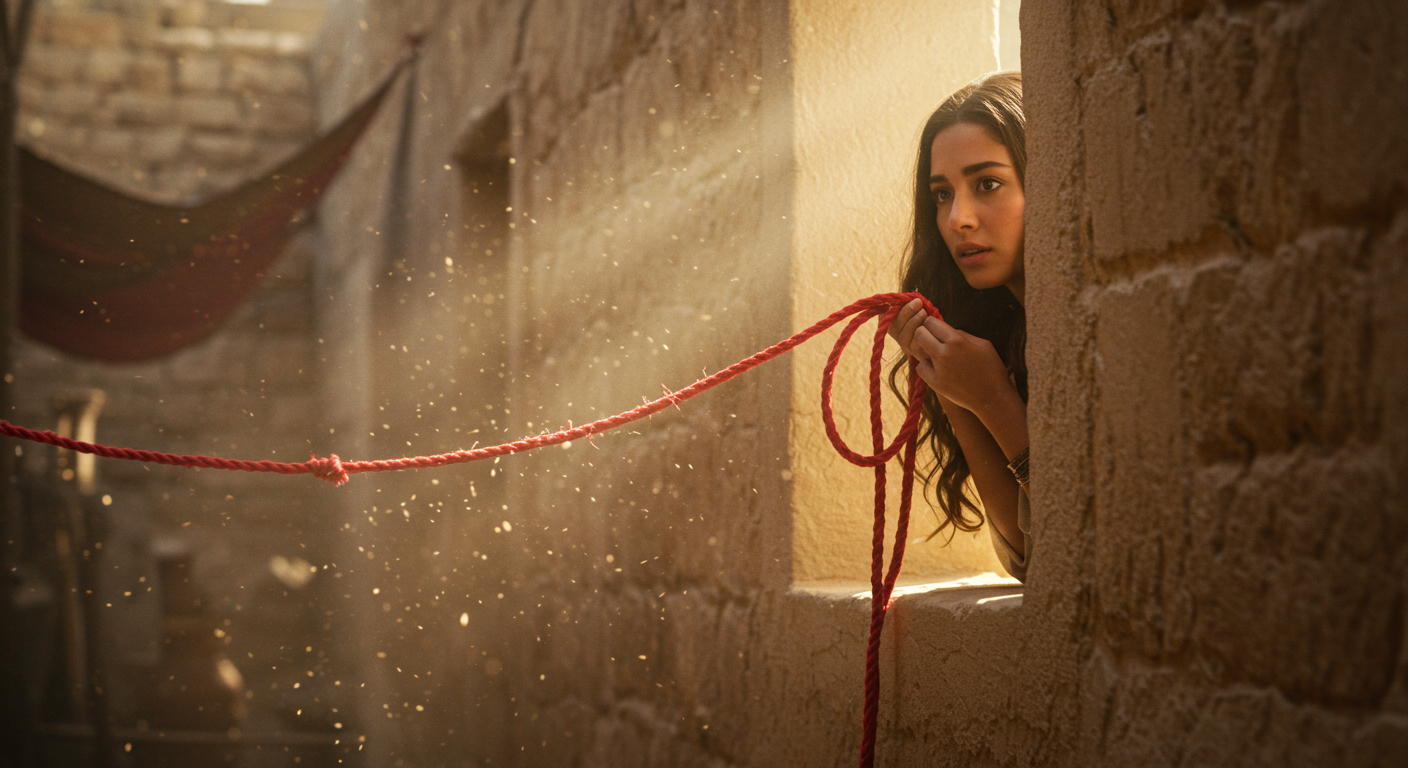
The scarlet cord foreshadows Christ
You’re probably asking, “How does this small cord point to Jesus?” Typology in Scripture often places people, events, and objects as foreshadowings of Christ. Rahab’s cord is a vivid example. It marks those who are protected and brought into a new family. Christ’s blood is the ultimate sign and means of salvation. Scripture says you were redeemed with “the precious blood of Christ” (1 Peter 1:18-19), and that by His blood you are saved. The scarlet cord is a humble, physical pointer to a greater reality: Christ’s sacrifice spans time and speaks to how God rescues people. So when you reflect on the “Rahab scarlet cord,” see it as a foreshadowing of Jesus’ redemptive work.
Redemption reaches the unlikely — Rahab in the lineage of Christ
Rahab’s story doesn’t end with deliverance. Her faith led to full inclusion in God’s people. She married Salmon and became the mother of Boaz, and her name appears in the genealogy of Jesus in Matthew: “Salmon the father of Boaz, whose mother was Rahab” (Matthew 1:5). If you’re tempted to think your past disqualifies you, Rahab’s inclusion in Christ’s family is a powerful corrective. The fact that the “Rahab scarlet cord” hung in her window and then she appears in the Messiah’s family tree tells you God uses imperfect people to accomplish His plans.
The cord is a covenant sign and an obedience marker
Covenants in the Bible are simple and memorable: circumcision, the rainbow, the Passover, and even prophetic actions like Isaiah’s walking naked and barefoot for a time. Rahab’s cord functioned similarly — a visible covenant sign tied to a promise. It was also a test of obedience. The spies told Rahab: Stay inside, bring your family in, tie the scarlet cord, and don’t risk your safety by stepping outside (Joshua 2:18-21). Obedience matters. When you trust God, He gives instructions, sometimes simple, sometimes costly, and your willingness to obey becomes proof of your faith. The “Rahab scarlet cord” stands as a reminder that obedience accompanies faith.
Grace before works — understanding the order
You might be wondering how to hold together the emphasis on Rahab’s faith and her good works. Scripture teaches you are saved by grace through faith, not by works, but true faith produces works (Ephesians 2:8-9). Rahab’s actions weren’t the root of her salvation; her faith was. But that faith inevitably led to the visible act of tying the cord and hiding the spies. In practical terms for you, the “Rahab scarlet cord” reminds you that when God saves you, your life begins to show evidence of that salvation.
The scarlet cord and the Passover: parallels of protection
The earliest and clearest parallel in Scripture to Rahab’s cord is the Passover. Pharaoh’s Egypt faced judgment, and Israel escaped by marking their doorposts with blood. The angel of death passed over marked houses. That same pattern — mark, passover, salvation — is evident in Rahab’s story. Notice how God always provides a sign or means by which people can be saved: in Egypt, it was blood; in Jericho, it was a cord; in you, it is the blood of Christ and the instrument of your faith. The “Rahab scarlet cord” therefore resonates as part of a wider biblical motif: God initiates salvation and tells you how to receive it.
The scarlet cord and confession: how you receive salvation today
Rahab’s action was both confession and covenant: she acknowledged that the Lord had given the land to the Israelites, and she aligned herself with that promise. Today, salvation comes when you confess and believe in Jesus Christ: “If you declare with your mouth, ‘Jesus is Lord,’ and believe in your heart that God raised him from the dead, you will be saved” (Romans 10:9). The scarlet cord is a symbol of that willingness to associate yourself with God’s people and their God. When you use it as a mental picture, it can help you remember that salvation requires both trust and a public turn toward God.
Rahab’s family and the community of faith
Rahab’s story is not purely individualistic. Her family’s salvation came through her faith and obedience. The spies instructed her to bring her family into the house and tie the scarlet cord so all would be spared (Joshua 2:18-21). Your faith affects those around you. When you step into Christ’s family, your loved ones are often touched. That said, salvation is a personal response. But the communal nature of the scarlet cord shows that God’s redemptive work frequently flows through relationships, which encourages you to pray and act for those in your circle.
The theology behind the cord: mercy and justice meeting
You’ll notice a theological tension in Rahab’s story: God is a God of justice who brought judgment on Jericho, and God is a God of mercy who saved Rahab. These realities meet in the scarlet cord. God’s justice demanded the fall of Jericho; God’s mercy provided a way out for Rahab. This mirrors the ultimate mechanism of redemption in Christ: God’s justice is satisfied through atonement, and God’s mercy is made available to you through Jesus’ sacrifice. The “Rahab scarlet cord” invites you to hold both realities — God is holy and just, yet He extends mercy to those who turn to Him.
Practical ways you can apply the symbolism of the scarlet cord
You don’t need to make a literal cord, but you can take practical steps to mirror Rahab’s faith in your life. First, confess your need and claim Christ’s protection. Second, obey God’s clear instructions in Scripture — they are often simple and aimed at your flourishing. Third, make your faith visible in community, inviting family and friends into the hope you’ve found. These actions are the modern equivalents of tying a cord and gathering loved ones inside. The “Rahab scarlet cord” becomes a mental aid for the practical realities of faith.
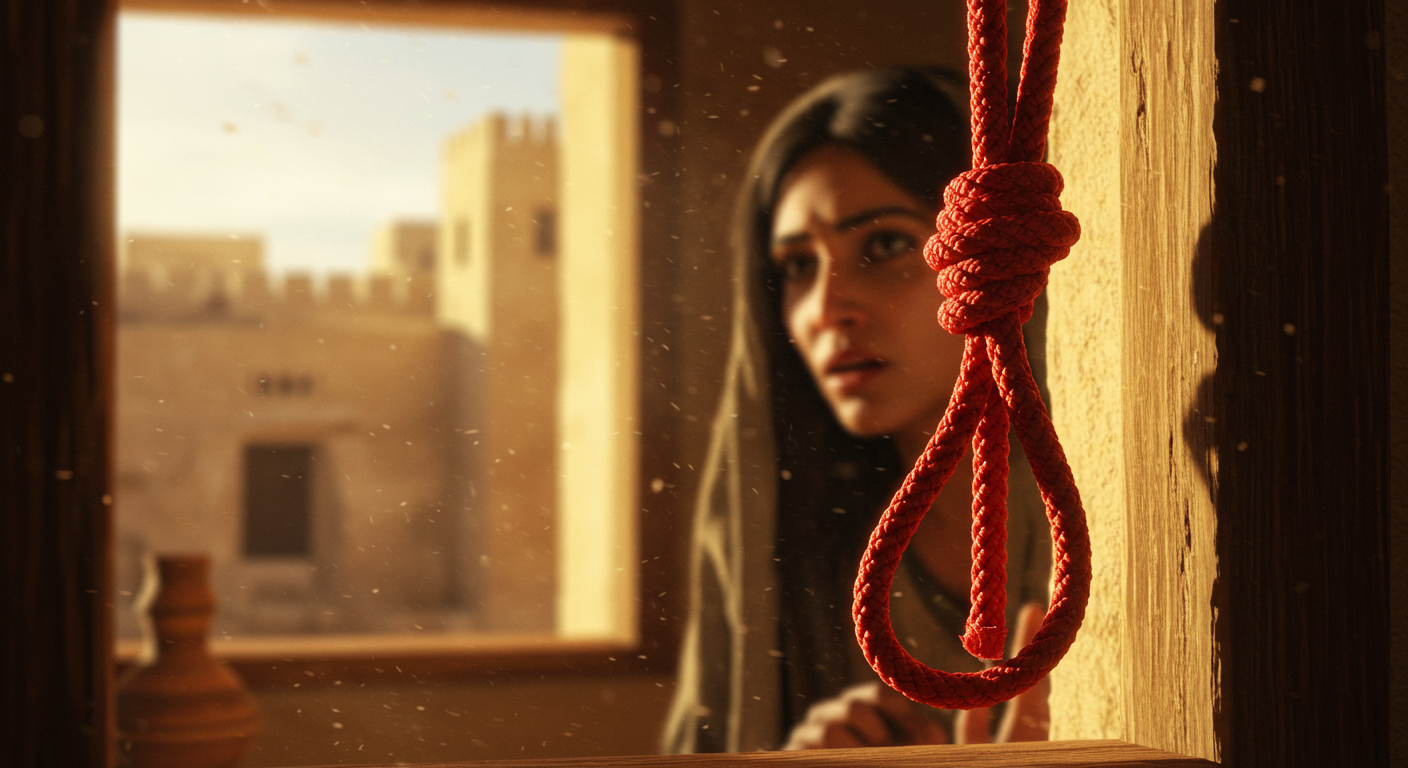
The scarlet cord in preaching and spiritual formation
Preachers and teachers have used Rahab’s cord as a ministry motif for centuries because it’s accessible and visceral. You can use the image to teach about grace, repentance, faith, and the inclusion of outsiders in God’s family. It also helps you understand how God sometimes uses signs as part of faith formation. When you teach or disciple, the scarlet cord can be a memorable symbol to help people grasp that salvation is both a gift and a responsibility.
Common misunderstandings about Rahab’s story
There are some common errors to avoid. First, don’t spiritualize the cord into a magic charm; it was a sign of faith, not a talisman. Second, don’t assume Rahab’s works bought salvation; Scripture frames her works as evidence of her saving faith. Third, avoid using Rahab’s past as a reason to exclude others; her inclusion in Jesus’ lineage is evidence that God’s grace can transform anyone. These clarifications help you use the story as the Bible intends: as a testimony to God’s saving power.
Questions you might have: FAQ
- Does the scarlet cord save by itself? No. The cord was a sign. Salvation is God’s work and comes by faith. The cord symbolizes the way faith is visible and is the means by which Rahab’s household was identified and spared (Joshua 2:18-21).
- Was Rahab forgiven because of her works? She was commended for her faith; her works were the fruit of that faith. The Bible holds both faith and works in a complementary relationship (Hebrews 11:31; James 2:25).
- How does Rahab point to Jesus? She represents an outsider brought into God’s people; her cord foreshadows the protective and redemptive power of Christ’s blood (1 Peter 1:18-19). The “Rahab scarlet cord” becomes a vivid typological pointer to the cross.
The scarlet cord encourages hope for the broken and repentant
If you feel your past disqualifies you from following God, remember Rahab. Her profession and choices didn’t stop God from redeeming her. Her name appears in the genealogy of Jesus, bringing you the hopeful truth that no one is beyond God’s reach (Matthew 1:5). When you see the “Rahab scarlet cord,” allow it to become an emblem of hope: God sees you, offers a way of escape, and invites you into His family.
Bringing it home: how to grasp the cord of salvation today
You may not be in a literal siege, but you face spiritual dangers: fear, guilt, addiction, shame. The biblical solution isn’t an amulet; it’s turning to Christ. The Bible offers the means and the promise. You receive salvation by confessing and believing, and you continue in it by placing your trust in Jesus’ atoning work (Romans 10:9). Imagine tying your own metaphorical scarlet cord — a visible, committed marker that you belong to Christ. That’s what Rahab did in her time, and that’s what Christ invites you to do now.
Final theological reflections
Historically and theologically, the “Rahab scarlet cord” functions on multiple levels. It’s a narrative detail, a moral example, a typological foreshadowing, and a pastoral encouragement. Scripture uses such images to communicate truths that are both deep and accessible. When you meditate on the cord, you’re participating in the same reflection that Christians have engaged in for centuries: seeking to understand how God saves, how He calls, and how He adopts from the margins to the center of His redemptive story. Isaiah’s words about scarlet becoming white find their fulfillment in Christ and in stories like Rahab’s (Isaiah 1:18).
The scarlet cord and your next step of faith
What are you going to do with this image? Tie something small in your mind to serve as a reminder of where your hope rests. Confess that you need God. Embrace obedience that visibly marks you as His. Pray for your family and friends. And if you haven’t yet believed, remember the simplicity of Rahab’s action and the clarity of the Gospel: faith in Christ brings salvation and adoption into God’s family (John 3:16; Ephesians 2:8-9). Let the “Rahab scarlet cord” be the image that helps you hold to that truth.
A pastor’s invitation
As Pastor Rick Warren would say, salvation is practical and personal. You don’t have to be perfect to be used by God, but you do need to be honest with Him. Take a moment to bow your head and invite Christ to be Lord of your life. If you’ve already made that decision, ask how you can show it by loving people, by obeying God’s Word, and by sharing the good news. Let Rahab’s story encourage you — God transforms lives.
Explore More
For further reading and encouragement, check out these posts:
👉 7 Bible Verses About Faith in Hard Times
👉 Job’s Faith: What We Can Learn From His Trials
👉 How To Trust God When Everything Falls Apart
👉 Why God Allows Suffering – A Biblical Perspective
👉 Faith Over Fear: How To Stand Strong In Uncertain Seasons
👉 How To Encourage Someone Struggling With Their Faith
👉 5 Prayers for Strength When You’re Feeling Weak
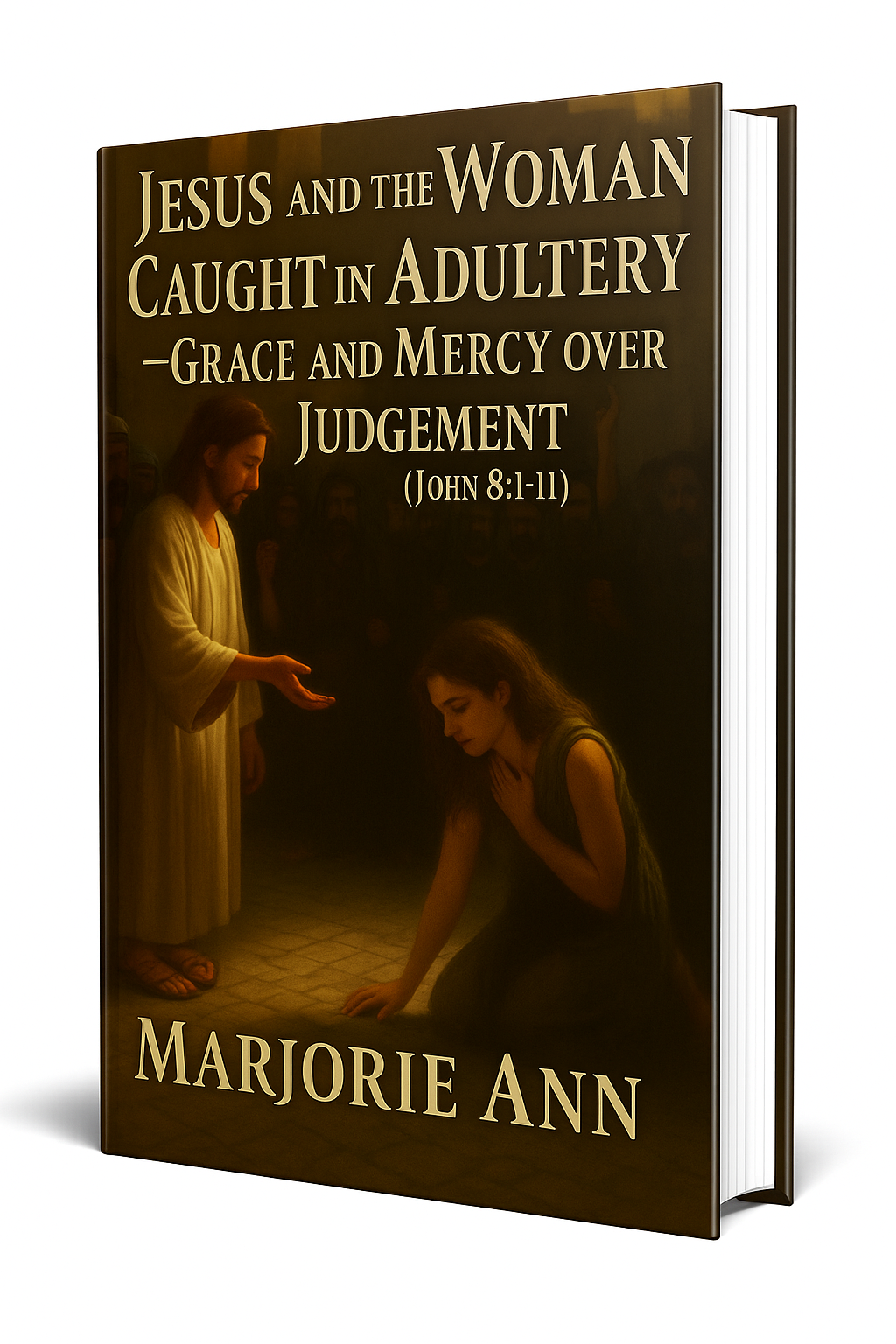
📘 Jesus and the Woman Caught in Adultery – Grace and Mercy Over Judgement
A powerful retelling of John 8:1-11. This book brings to life the depth of forgiveness, mercy, and God’s unwavering love.
👉 Check it now on Amazon
As a ClickBank & Amazon Affiliate, I earn from qualifying purchases.
Acknowledgment: All Bible verses referenced in this article were accessed via Bible Gateway (or Bible Hub).
“Want to explore more? Check out our latest post on Why Jesus? and discover the life-changing truth of the Gospel!”




